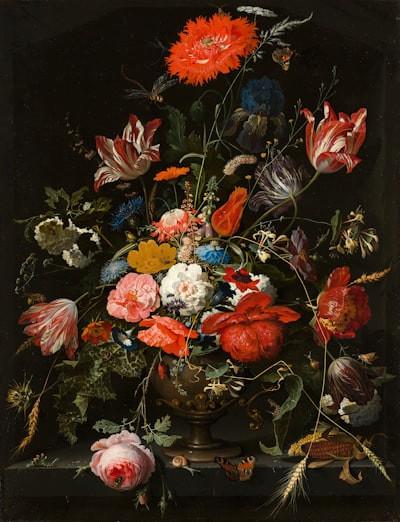Street and Graffiti Art - Concepts & Styles
Curated from: theartstory.org
Ideas, facts & insights covering these topics:
9 ideas
·3.73K reads
42
Explore the World's Best Ideas
Join today and uncover 100+ curated journeys from 50+ topics. Unlock access to our mobile app with extensive features.
The Concept of Graffiti
Graffiti, or the practice of writing, drawing, painting or doodling on walls and other surfaces is as old as man himself, with prehistoric and ancient cave paintings of hunting scenes being the first documented proof of the same. The word comes from the Greek term ‘graphein’ and means to ‘scratch, draw or write’.
Graffiti was employed during World War II to create brotherhood among soldiers, who felt a connection with the words and images on the walls left by other soldiers.
142
954 reads
Modern Graffiti
- Contemporary graffiti dates back to 1967, arising from the Black and Latino communities in New York City, with the aerosol spray paint acting as a catalyst.
- The artists, known as taggers, used to ‘tag’ or paint in as many locations as possible, with the intention to ‘get up’, having maximum people see the art.
- Subway cars and trains became the next big thing to ‘tag’ with graffiti, as their mobile nature ensured that more people would see it. The giant artwork had a unique energy and aura while it moved, creating an effect that is not possible on a static wall.
124
444 reads
NYC Graffiti Problem
In about a decade, the ‘vandalism’ of infrastructure and public property became a big problem in NYC, as it had a negative psychological effect on every citizen. The authorities put in measures to make it harder for the writers to hit their targets, but it just made the game more challenging and interesting for the artists.
Extreme steps were taken in 1984 to clear NYC of Subway car/train graffiti, and commuters had to face hardships, but the practice of street graffiti flourished in the coming decades.
112
392 reads
Street Art
- Apart from attention-seeking graffiti, street art had other traditional forms that put real art (in an image form) outside of the churches and galleries, something visually different than the text-based urban communication that graffiti that helped early writers develop a network.
- Key artists that got into image-based art were Jean-Michel Basquiat (known by the tag SAMO) and Keith Haring.
- This was also the time when there were major changes in drawing techniques and type of material used, shifting away from the aerosol paint cans.
133
575 reads
Fast Graffiti: Stencils
Many artists made the concept of writing and drawing graffiti faster and more uniform by using stencils, which were made of cardboard and had the cut out of the intended art. Multiple stencils were used in creative ways to add depth and a striking visual element to the viewer.
Stencils became handy and popular as they could be used a number of times and the writer/artist only took a few seconds to complete the graffiti and flee the scene.
110
319 reads
Creative Graffiti Forms
- Wheat Paste Posters: The posters made of flour paste could be attached to walls in a matter of seconds, with all the work already done before.
- Sculptural Street Art: 3D objects which are placed at strategic places to create a surprising visual effect to the passer-by.
- Reverse Graffiti: Also called clean tagging, this kind of graffiti involves cleaning a surface in such a selective way that the intended image or text is visible as the cleaned area. This was an ingenious way to make a statement by simply removing dust from a wall.
- Ceramic Tiles: Coloured tiles were a novel way to put street art to the public, and they were fairly permanent.
120
277 reads
Graffiti and Other Media
Many writers used stickers, speech bubbles, clay, chalk, charcoal, video projections, laser beams and even flowers to drive home the message they want to convey.
The creative minds needed space to foster, using any form of expression as a medium to make street art.
114
253 reads
Mainstream Acceptance of Graffiti
The act of writing or tagging in a public place, is a celebration of existence, but at the same time a declaration of resistance. The accessibility of street art makes it an alternate medium of information, something that is not controlled by the government, like it should be.
New tools such as computer graphic software and digital photography, along with the increased global reach due to the internet and social media have immortalized street art, unlike before.
112
220 reads
Street Art as Vandalism
Though street art is an accepted form of art, it is still considered as vandalism.
Many artists have the option to create artworks in galleries and museums, and get paid for it, but the adrenaline rush of doing something illegal, or going against the authorities is alluring to the artists basic instincts of adventure and thrill.
112
296 reads
IDEAS CURATED BY
Martirms Grey's ideas are part of this journey:
Learn more about personaldevelopment with this collection
How to practice self-compassion
How to identify and challenge negative self-talk
How to build self-confidence
Related collections
Similar ideas
5 ideas
What Is Impressionism in Art?
thoughtco.com
9 ideas
What Is Crypto Art And How Does It Work?
eden-gallery.com
6 ideas
Is It Even Possible to Define What Art Is, Exactly?
thoughtco.com
Read & Learn
20x Faster
without
deepstash
with
deepstash
with
deepstash
Personalized microlearning
—
100+ Learning Journeys
—
Access to 200,000+ ideas
—
Access to the mobile app
—
Unlimited idea saving
—
—
Unlimited history
—
—
Unlimited listening to ideas
—
—
Downloading & offline access
—
—
Supercharge your mind with one idea per day
Enter your email and spend 1 minute every day to learn something new.
I agree to receive email updates
